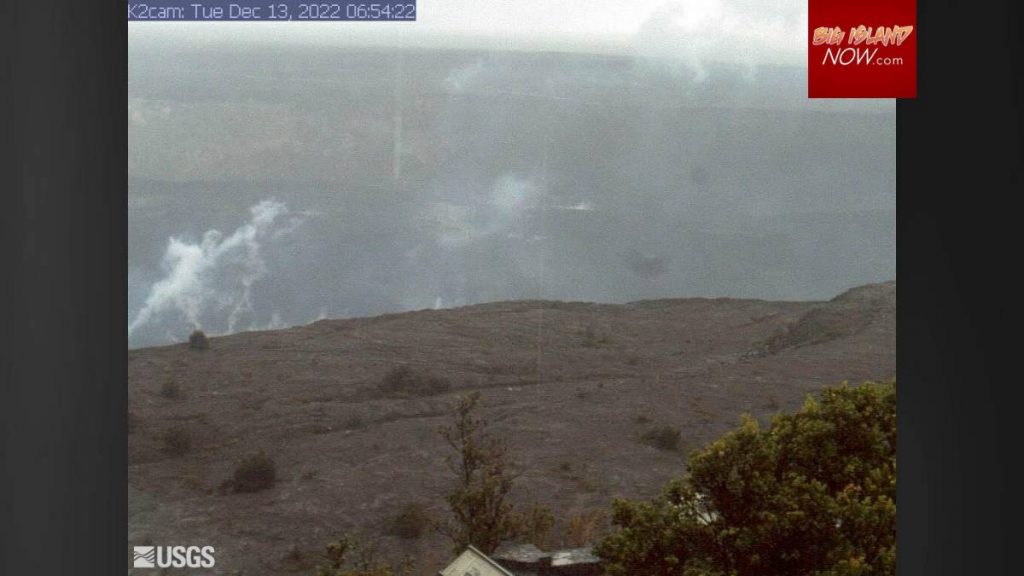Big Island’s Mauna Loa and Kīlauea volcanoes no longer erupting
The sister volcano eruptions on the Big Island are over — for now.
The U.S. Geological Survey’s Hawaiian Volcano Observatory announced in back-to-back news updates that Mauna Loa and Kīlauea have both stopped erupting.

Regarding Mauna Loa: Lava supply to the fissure 3 vent on the Northeast Rift Zone ceased on Dec. 10 and sulfur dioxide emissions have decreased to near pre-eruption background levels. Volcanic tremor and earthquakes associated with the eruption are greatly diminished.
Regarding Kīlauea: Lava supply to the Halemaʻumaʻu lava lake ceased on Dec. 9 based upon lava lake levels and behavior of the crater floor. Sulfur dioxide emissions have decreased to near pre-eruption background levels.

Accordingly, the Hawaiian Volcano Observatory is lowering the Volcano Alert Level for ground-based hazards from watch to advisory and the Aviation Color Code from orange to yellow for Mauna Loa and Kīlauea.
On Mauna Loa, spots of incandescence may remain near the vent, along channels, and at the flow front for days or weeks as the lava flows cool. However, eruptive activity is not expected to return based on past eruptive behavior. Summit and Northeast Rift Zone inflation continues.
The Mauna Loa eruption began on Nov. 27, 2022, 38 years after its last eruption.
On Kīlauea, seismicity and deformation patterns remain unsettled, which means there remains a potential the eruption will resume or a new eruption can occur at or near the summit of Kīlauea.
The observatory continues to closely monitor both volcanoes for signs of renewed activity. Should volcanic activity change significantly a new Volcanic Activity Notice will be issued.
The 4.5-mil lava viewing and parking area, which runs along Old Saddle Road and through the U.S. Army Garrison’s Pōhakuloa Training Area, will have new hours for the next two days and then close completely.
On Dec. 14 and 15, the hours will be 4 p.m. to midnight. It closes for good on Dec. 16.
The entry to the 4.5-mile, one-way route through Pōhakuloa Training Area land is directly across from Gilbert Kahele Recreation Area, with its exit at a junction point on the highway just before the Pu‘u Huluhulu volcanic cinder cone near the Maunakea Access Road. The recreation area will continue to stay open 24/7.
Mauna Loa Forest Reserve continues to be closed.
Hazards are also still present on Mauna Loa.
A vent on the west side of the fissure 3 cone remains incandescent and occasionally produces small explosions as trapped gases are released. The lava flows around the vent remain hot and unstable. The vent area is also cut by numerous ground cracks.
The lava flows continue to cool, but material just below the surface is hot enough to boil water in some areas, said Ken Hon, Scientist-in-Charge at Hawaiian Volcano Observatory.
Hawai‘i Volcanoes National Park has closed the Mauna Loa Road from Kīpukapuaulu and the closure extends to the summit caldera; for more information please see https://www.nps.gov/havo/index.htm.
Hazards are still present on Kīlauea. Residents and visitors should stay informed and follow County of Hawai‘i and Hawaiʻi Volcanoes National Park guidelines.
The continuing hazards: Levels of volcanic gas (sulfur dioxide and carbon dioxide) can remain locally hazardous even though Kīlauea is no longer erupting. Sulfur dioxide (SO2) gas emissions have greatly decreased; however, local concentrations of sulfur dioxide (SO2) or hydrogen sulfide (H2S) may persist in downwind areas, and residents may notice odors of these gases occasionally. Significant hazards also remain around Halemaʻumaʻu from crater wall instability, ground cracking and rockfalls that can be enhanced by earthquakes within the area closed to the public.
For more information about the meaning of aviation color codes, see https://www.usgs.gov/programs/VHP/volcanic-alert-levels-characterize-conditions-us-volcanoes
Sponsored Content
Comments








